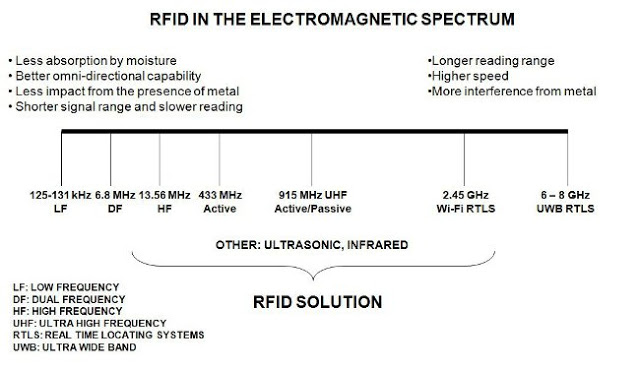LF, HF, UHF Frequency: What’s the Difference?
Source: Shain Anderson @ RFID Insider
Similar to how a radio must be tuned to different frequencies to hear different channels, RFID tags and readers have to be tuned to the same frequency in order to communicate. There are several different frequencies an RFID system can use. Generally, the most common are
- Low frequency, or LF, (125 – 134 kHz)
- High frequency, or HF, (13.56 MHz)
- Ultra-high frequency, or UHF, (433, and 860-960 MHz)

Radio waves behave differently at the various frequencies, so it is imperative to select the right frequency for your application.
For example, low-frequency tags have a long wave-length and are better able to penetrate thin metallic substances. Additionally, LF RFID systems are ideal for reading objects with high-water content, such as fruit or beverages, but the read range is limited to centimeters or inches. Typical LF RFID applications include access control and animal tagging.
High-frequency tags work fairly well on objects made of metal and can work around goods with medium to high water content. Typically, HF RFID systems work in ranges of inches, but they can have a maximum read range of about three feet (1 meter). Typical HF RFID applications include tracking library books, patient flow tracking, and transit tickets.
UHF frequencies typically offer much better read range (inches to 50+ ft. depending on the RFID system setup) and can transfer data faster (i.e. read many more tags per second) than low- and high-frequencies. However, because UHF radio waves have a shorter wavelength, their signal is more likely to be attenuated (or weakened) and they cannot pass through metal or water. Due to their high data transfer rate, UHF RFID tags are well suited for many items at once, such as boxes of goods as they pass through a dock door into a warehouse or racers as they cross a finish line. Also, due to the longer read range, other common UHF RFID applications include electronic toll collection and parking access control.
